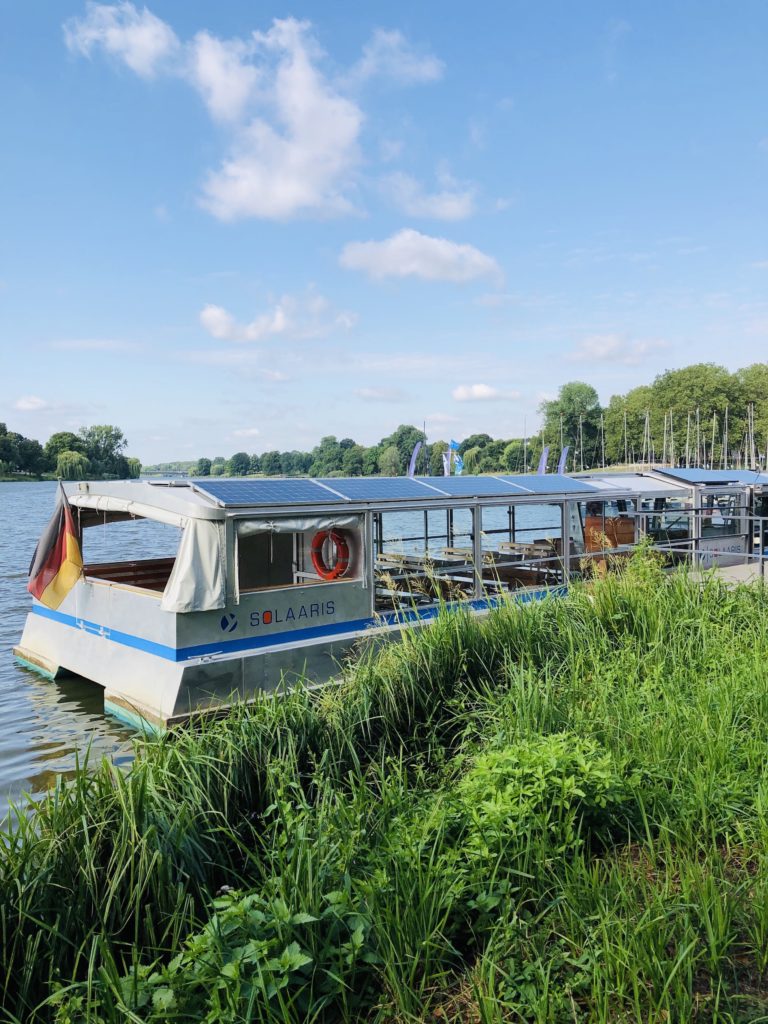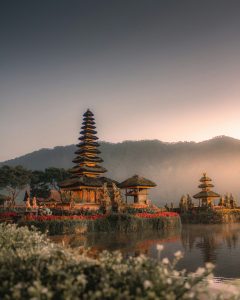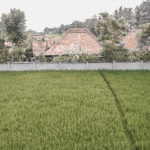On any visit to Germany, the main points of entry are typically Munich, Berlin or Frankfurt. While Berlin and Munich have much to offer tourists, next time you’re in Germany why not venture off the beaten path and discover the hidden gems that lie in the northern region. Here are 4 historic cities dripping with charm and character, and that also happen to belong to the Hanseatic League of Cities.
Muenster
Cycle through the promenade, visit the Allwetter conservation zoo, hear the tower keeper blowing the horn daily, and drink a beer at the Hafen or revitalized harbor
Germany’s Cycling Capital
Muenster is the first of the four historic cities I visited and is just an hour and 20 minutes from Dusseldorf Airport Station by train. This city is worth a 2-3 day stay. What was once the site of the brutal Anabaptist Rebellion, the city has since morphed into the cycling capital of Germany. Muenster was also a leading member of the Hanseatic League, a powerful economic and defensive alliance for trading merchants.

Historic Marketplace
A visit to this historic city is not complete without a stop at the historic marketplace, Prinzipalmarkt. My favorite part of Muenster might very well be this square, with its 48 picturesque gabled houses, and colonnades. It’s also the site of the historical Gothic town hall where the Peace Treaty of Westphalia was confirmed. St Lambert’s church with its man sized cages still hanging from the spire is also home to the city’s first female tower keeper who blows the horn every day (except Tuesday’s) at 9pm. I had the honor of climbing 298 steps with Martje Salje and spending time with her inside her office. I was deeply grateful to be able to witness her routine on the balcony, and see first hand how she upholds the traditions of this historic city.



During the summer months, head down to the Aasee and take the solar boat SOLAARIS to the All-Weather Zoo. More than just a zoo, it’s known for its conservation efforts. For example, Allwetterzoo breeds endangered songbirds in order to help maintain healthy and self-sustaining populations. The zoo also breeds the endangered Bali Mynah. These birds suffer from illegal poaching for the cage-bird trade. In 2001, only 6 were left in the wild! The zoo is home to 20 species of the endangered Southeast Asian turtles, out of which one species was just released to China. There are classes for children and they can even feed elephants during feeding time.

Hafen and Museums
The Hafen or harbor has been renovated to offer a hip mix of restaurants, cafes, bars and theaters. I cycled over to the harbor area to find a surprisingly relaxing vibe of cafes and restaurants. You will see many outdoor patios overlooking the Dortmund-Ems Canal, people walking their dogs, and several people just sitting on the promenade enjoying the water views.

Muenster is home to plenty of museums such as the first and only Picasso Museum in all of Germany. Why is Germany’s first Picasso museum housed in Munster? There’s an interesting story here, but I will leave you to visit and find out for yourself!
What to eat
If you visit in summer, Altbierbowle (beer mixed with fruits) is popular, while the pancake with mushrooms at Altes Gasthaus Leve, the oldest restaurant is delicious and goes against everything I perceived German food to be.
Where to stay
A 10-minute walk from the train station had me standing in front of a modern building called H4 Hotel. It is perfectly located at the entrance to old town. It’s a standard hotel with a luxury feel. Yet it felt intimate and cozy thanks to my room with the window seats. The architecture is vaguely scandinavian. The restaurant on site has a buffet spread that you can take advantage of in their lovely rooftop.



Osnabruck
Sample local wines at the wine festival in August, visit the Botanic Garden and don’t miss the Felix Nussbaum Museum for a one of a kind experience
Wine Festival
Osnabruck is a mere 20-minute train ride away from Munster but worth more than a day trip. Spend two days here to really feel the vibe the city has to offer. The City of Peace is also where the Peace of Westphalia was signed, helping end the Thirty Years’ War. Osnabruck takes you back to the medieval periods, and if you’re there in early August be sure to attend the wine festival, in front of the town hall, where I guarantee, you might feel like you’re in an episode of Game of Thrones.

The Botanical Garden
The Botanical Garden is a must visit for everyone and although its main purpose is for Research, it is also open to tourists as one quarry houses the greenhouse and the other quarry allows you to see a conservation area and a diverse collection of rare plants. I even saw an insect hotel which provides insects a home. Apparently these hotels are quite popular in Europe!


Felix Nussbaum Museum
I highly recommend the Felix Nussbaum Museum which not only displays the art of a great German-Jewish artist but also tells the story of his experience at the concentration camps. What’s unique about this museum is that the architecture (built by Daniel Libeskind who was commissioned for Ground Zero in New York) itself is shockingly brilliant. For the first time in my life, I was really moved by a museum. Visit to see why.

Where to eat
If you have a sweet tooth, like me, be sure to spend time at Leysieffer, a 108 year-old confectionary shop where you can taste an array of truffles and, pastries. My favorite café in Osnabruck is Redlinger’s Deli and Café for Buddha Bowls, Fontanella for spaghetti ice cream, Schlecks for do it yourself ice cream with unique toppings, and ART Elier Thomas Jankowski’s café for the best décor and outdoor patios. This gallery/café has an upstairs space that showcases rotating local artists and offers the best Gin with Elderberry. Fancy a feta watermelon salad? Don’t look any further than the hipster Henne. Their overnight bowl of chia pudding is deeply satisfying. Springbrotchen is the local bread to try at any bakery while drinks like iced mango matcha cocos latte at Redlinger’s Deli and Cafe will pleasantly surprise you. For a sit down meal try the Weinkruger located in a historic building. This a must for the atmosphere and the food, located in a quiet alley in historic old town. Try the beef on a stick (Steck’l Wick’l), one of their signature dishes or the spinach crepe if you feel like eating vegetarian food. One thing that surprised me consistently was the availability of at least one vegan dish on any menu.




Where to Stay
A stay at the Romantik Hotel Walhalla, one of Osnabruck’s few remaining historic buildings is really a delight and should not be missed for the ambience. Ask for one of the larger rooms facing the street. I felt like a princess in my suite and the room even had a throne chair in the bathroom. Osnabruck also belonged to the Hanseatic League cities.

Lubeck – the City of the Seven Spires
Cruise the Trave around Old Town, eat Marzipan at Niederegger, get educated at the European Hanse Museum and discover Lubeck’s alleys
Old Town & Hanse Museum
There are several things that set Lubeck apart from Munster and Osnabruck. The river Trave circles the entire city of Lubeck. Much of the city is Brick Gothic architecture. It is known as the Queen of the Hanseatic League and was also once the capital of the league. Founded in the 12th century, the city enjoyed 4 prosperous years as the major trading centre for Northern Europe. While the city was damaged in the Second World War, you can still see some of the 15th and 16th century houses, the Holstentor brick gate, churches and salt storehouses that remain intact. Your first stop in Lubeck should be the European Hanse museum which is the largest museum in the world dedicated to the history of the Hanseatic League. It is one of the best engaging museums I have been to in a long time, and I don’t even like museums!



Lubeck’s history of Marzipan
Lubeck is also home to an exotic sweet treat. Since the 18th century, confectioners have used almond paste to produce the finest marzipan. Once the indulgence of only royalty, the marzipan is now available to everyone. While marzipan originated in what is today Iran, through trading, it found its way to Europe. Since Lubeck was a trading hub, they had all the ingredients to produce their own marzipan. The other reason that Lubeck became well known for this sweet treat is the quality. Instead of adding more sugar, they produced marzipan with a lot more almonds. The marzipan here has no more than 30% sugar. Don’t miss a visit to Niederegger to buy marzipan, indulge in some marzipan pastries at the café, and visit the salon on the top floor to understand the history and see amazing life-sized statues made entirely from marzipan.

Lubeck’s Alleyways
Lubeck is unique because it is also home to little houses called Buden (shacks), located at the back of townsmen’s houses and in the inner parts of housing blocks. As Lubeck’s success grew due to the prospering trade business, it became crowded inside the Old Town. Passageways running through the front houses were created and the yards in the rear were built up with huts known as Buden. While none of these wooden huts are standing now, their stone successors still remain today. Imagine, some of them are more than 400 years old and tiny and colorful like doll houses. As these alleys and courtyards are still lived in today, please be mindful of the inhabitants as you explore these areas.



St Mary’s Church
Lubeck has many churches but the 13th century symbol of the city is Marienkirche. St. Mary’s is also Germany’s third largest church. The brick basilica actually serves as a model for the Gothic brick style of churches in the entire Baltic region. The bells located in the south tower fell to the stone floor during the 1942 air raids and they remain there as a reminder.
Harbor Cruise
A harbor cruise down the Trave is relaxing and educational. Don’t miss the viewing platform at sunset from St. Peter’s Church.

The Duckstein festival
This is the place to enjoy cold beer along with a variety of cuisines. Located along the banks of the river Trave, against the picturesque background of Old Town, the Duckstein festival is the perfect way to spend an evening by the river. In 2019 this festival was in early August. The sunsets from here are intense and gorgeous.
Where to eat
My favorite spots to grab a bite to eat are the Café Nord inside the Hanse Museum, for their tomato soup with Basil foam and their Blueberry marzipan, Schiffergesellschaft for the unique historic atmosphere and excellent fish, and The Newport located by the river for amazing views, vegan options, seafood, and lovely salads.
Rostock and Warnemunde
Visit the town of Rostock, take a dip in the Baltic Sea in Warnemunde and enjoy staying inside a shipping container
Seaside resort
Lubeck to Rostock is a one hour twenty five-minute train ride away. Once you reach Rostock, transfer to another train for a quick twenty-minute ride to Warnemunde, the sea-side resort. Warnemunde took me by surprise. Not only had I not heard of this little town, I had no idea Germany had access to the Baltic Sea. Just two hours north of Berlin, Warnemunde is a popular seaside resort town for locals.

Where to stay
Here, I stayed at one of the most unique places ever – in a shipping container. The Dock Inn is a fabulous hostel that uses overseas containers as rooms. The hostel has a sauna, bar, restaurant, a 24-hour front desk, a games room and an in-house cinema. There is also a climbing space for bouldering enthusiasts. Bikes are available for rent and I spent my two days cycling through the town. I stayed in a double room with private bathroom, but you can also stay in a 4-8 bed mixed, or female only dormitory room.




The Hanse Sail festival
Warnemunde has a beautiful wide, sandy beach 15 kilometres in length. Time your trip for mid-August and you will catch the Hanse Sail festival, to transport you back to the city’s Hanseatic heyday. I noticed the ocean was really calm when I went in August. The water was also quite warm. I was told the wicker chairs on the beach that are cabanas were invented here in Warnemunde!
What to see in Warnemunde
The iconic lighthouse and Teapot restaurant dominate off the beach. The teapot is an excellent place to sample the seafood in Warnemunde. I climbed up the lighthouse for some epic views off the coast and also spotted a red and green lighthouse, ferries leaving the harbor for the 45-minute trip to Denmark, and Hotel Neptune that has a gorgeous rooftop restaurant. The walking street along the canal is called der Alte Strom or the Old Channel. You will see tons of restaurants, shops, bars and fish markets. You can walk all the way to the end of the promenade toward the green lighthouse for sunset.

Tired of the coast? Well, you can either drive or cycle along a parallel road to the beach towards the spectacular forest known as “ghost wood”.

Or you can take a 45-minute ferry from Warnemunde to Rostock for a half day exploration of the city. Rostock is actually home to Germany’s oldest university.

Ferry to Rostock
While on the ferry, you can see the manufacturing of ship parts along the way. Rostock’s income comes mainly from this as well as cruise ship tourism. Walk through the pedestrian only street of Kropeliner Strasse, lined with shops and restaurants. You can also see St Mary’s Church, home to the oldest astronomical clock in Northern Germany still working with original parts from 1472! It is also home to one of the largest stained glass windows in Europe and shows the Day of Judgement. The church also boasts an organ that has 5,700 pipes and is one of the most beautiful organs I have ever seen. You will see both a Gothic and Baroque altar in this church, making this one of the most interesting churches to visit in Rostock.

Joy of Life fountain
I spent a few hours hanging out by the Joy of Life Fountain in the center of the University Square. The controversial sculptures contribute to the name, “the Porn Fountain” for obvious reasons! The square is lively and boasts ample views of the gabled merchants’ Renaissance houses that survived the Second World War.




You can’t leave Rostock without spotting the half eel and half snake statue in town. This is proof that you have been to Rostock.
Stumbling Stones
As you stroll around Rostock, you might notice the stumbling stones around the city. These are protruding stones in the ground that commemorate a victim outside their last-known freely chosen residence. Germans think of them as mini memorials to Holocaust victims and say it’s an everyday reminder of that which should not be repeated. I saw this in Osnabruck as well and realized these stones focus on the individual tragedies of the victims.
I would never have guessed Northern Germany would be home to such hidden gems with so much history and character. As a solo traveler, I felt welcomed, safe, and realized how easy it was to travel around these towns on my own. If you want a local slice of Germany, far away from the madding crowds of Berlin and Munich, check out these towns on your next visit to Germany.








2 Responses
Found your blog when the tourist account of Lübeck shared your story on Instagram. I really like the way you describe the cities and places you visited on your trip but your pictures are the most beautiful part of this article! Love them 😍 And maybe, when you’re in Germany the next time, you don’t have to travel more than one hour by train to reach the German coast of the Baltic Sea, because the smaller villages Timmendorfer Strand and Scharbeutz are even closer (approx. 15min by train). 😉
Thank you so much for sharing Tamara, appreciate your feedback and so happy to hear you liked my photos 🙂
Next time I would LOVE to check out the smaller villages you mention – gosh so much to discover in Germany!!